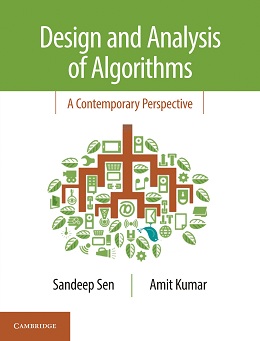Design and Analysis of Algorithms: A Contemporary Perspective
eBook Details:
- Paperback: 350 pages
- Publisher: WOW! eBook (May 31, 2019)
- Language: English
- ISBN-10: 1108721990
- ISBN-13: 978-1108721998
eBook Description:
Design and Analysis of Algorithms: A Contemporary Perspective
The text covers important algorithm design techniques, such as greedy algorithms, dynamic programming, and divide-and-conquer, and gives applications to contemporary problems. Techniques including Fast Fourier transform, KMP algorithm for string matching, CYK algorithm for context free parsing and gradient descent for convex function minimization are discussed in detail. The book’s emphasis is on computational models and their effect on algorithm design. It gives insights into algorithm design techniques in parallel, streaming and memory hierarchy computational models. The Design and Analysis of Algorithms: A Contemporary Perspective book also emphasizes the role of randomization in algorithm design, and gives numerous applications ranging from data-structures such as skip-lists to dimensionality reduction methods.
Focusing on the interplay between design and underlying computational models, this text enables an advanced understanding of the key principles, techniques and applications of algorithms. Important algorithm design techniques such as greedy algorithms, dynamic programming, and the divide-and-conquer technique are comprehensively discussed, with a particular emphasis on randomization. The text also connects applications with contemporary problems, such as the Johnson-Lindenstrauss dimension reduction method for high-dimensional nearest neighbor searching, construction of graph spanners, and gradient descent for convex function minimization.
The importance of computational models and their effect on algorithm design is highlighted throughout, providing insight into techniques in parallel, streaming and memory hierarchy computational models. Numerous examples of real-world applications, ranging from data structures like skip-lists to dimensionality reduction methods, help to connect theory with practice.


![Real-World Projects with MEAN Stack [Video]](https://www.wowebook.org/wp-content/uploads/2019/01/Real-World-Projects-with-MEAN-Stack-Video.jpg)
![Python Machine Learning in 7 Days [Video]](https://www.ebookee.ws/wp-content/uploads/2018/06/Python-Machine-Learning-in-7-Days-Video.jpg)
